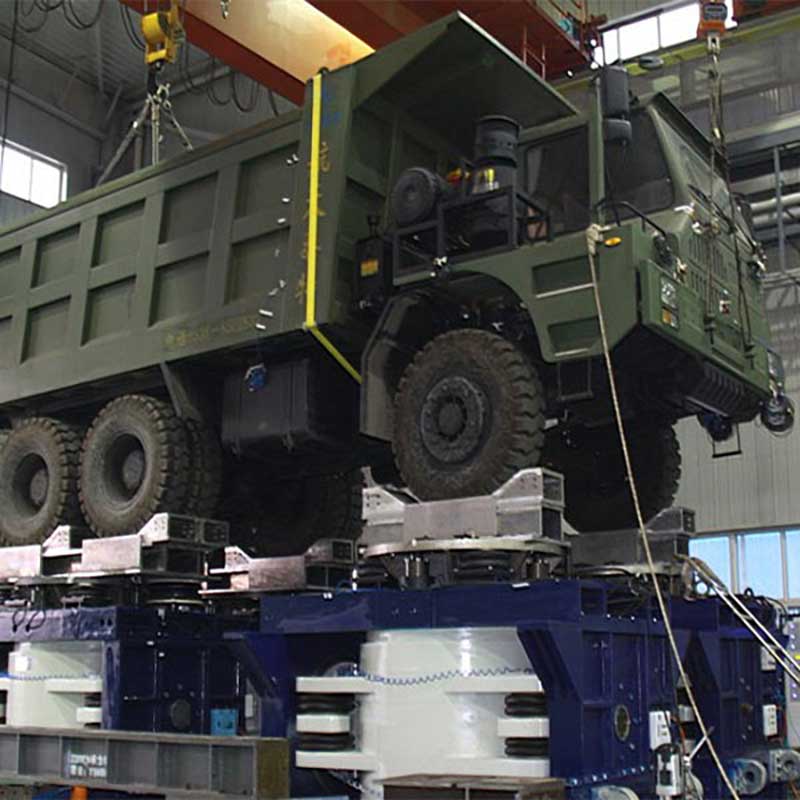In the automotive industry, vibration testing is an important part of ensuring vehicle safety, reliability and performance. At present, a variety of automotive vibration test standards have been developed around the world to guide manufacturers to evaluate the performance of vehicles under different conditions. This article will briefly understand some of the most representative automotive vibration test standards and their applications.
JISD 1601:Japanese Industrial Standards (JIS) specification for vibration testing of automotive parts
SAE J1211:Standards published by the Society of Automotive Engineers (SAE) deal with vibration testing of automotive components and systems
SAE J2974:Standards developed by the Society of Automotive Engineers (SAE) cover vibration test methods and procedures for complete vehicles.
ECE R 13:Standards developed by the United Nations Economic Commission for Europe (UNECE) deal with the safety and vibration testing of complete vehicles.
The JISD 1601 standard is designed to provide the automotive industry with uniform test methods and specifications to assess the vibration environment encountered by components in actual use. The standard covers many types of vibration tests, including excited vibration, free vibration and forced vibration, and provides the corresponding test conditions and measurement parameters. Following JISD 1601 allows automakers to gain a deeper understanding of the vibration characteristics of components to optimize designs and improve product quality.
Type of test
Resonant frequency detection test
The test is designed to determine the resonant frequency of each component.
Vibration endurance test This test
Used to determine the durability of each component against constant frequency vibration.
Sweep collar vibration durability test
The test is designed to determine the durability of each component against vibration, which continuously increases and decreases in frequency at a constant rate.
Vibration function test
The purpose of the test is to check the function of each component under vibration conditions.
This standard discusses the robustness of electrical/electronic modules for automotive applications and also discusses external reliability detection and prevention methods. This document mainly deals with electrical and electronic modules (EEM), but can be easily adjusted for use in mechatronics, sensors, actuators and switches.
Test purpose
Determine the performance of automotive parts under vibration.
Evaluate the durability of parts under real driving conditions.
SAE J2974 is a standard developed by the Society of Automotive Engineers (SAE) that focuses on vibration and shock testing of electric and hybrid vehicles. This standard provides guidance for evaluating the performance of battery systems and their components in different vibration environments, ensuring their reliability and durability in actual use.
Test purpose
Evaluate the performance of battery packs and related components under vibration and shock conditions.
Ensure that the battery systems of electric and hybrid vehicles can withstand the mechanical loads encountered in actual operation.
ECER13 is a standard developed by the United Nations Economic Commission for Europe (UNECE) for vibration and shock performance testing of vehicles. The standard applies to public transport vehicles, such as buses and light rail vehicles, and aims to ensure their safety and reliability under different operating conditions. Through standardized test procedures and standards, ECER13 also helps manufacturers identify potential design defects to improve overall vehicle performance and passenger comfort, ensuring efficient operation of public transport is a standard developed by the United Nations Economic Commission for Europe (UNECE), which focuses on vibration and shock performance testing of vehicles. The standard applies to public transport vehicles, such as buses and light rail vehicles, and aims to ensure their safety and reliability under different operating conditions. Through standardized test procedures and standards, ECER13 also helps manufacturers identify potential design defects, thereby improving overall vehicle performance and passenger comfort, ensuring efficient operation of public transport.
